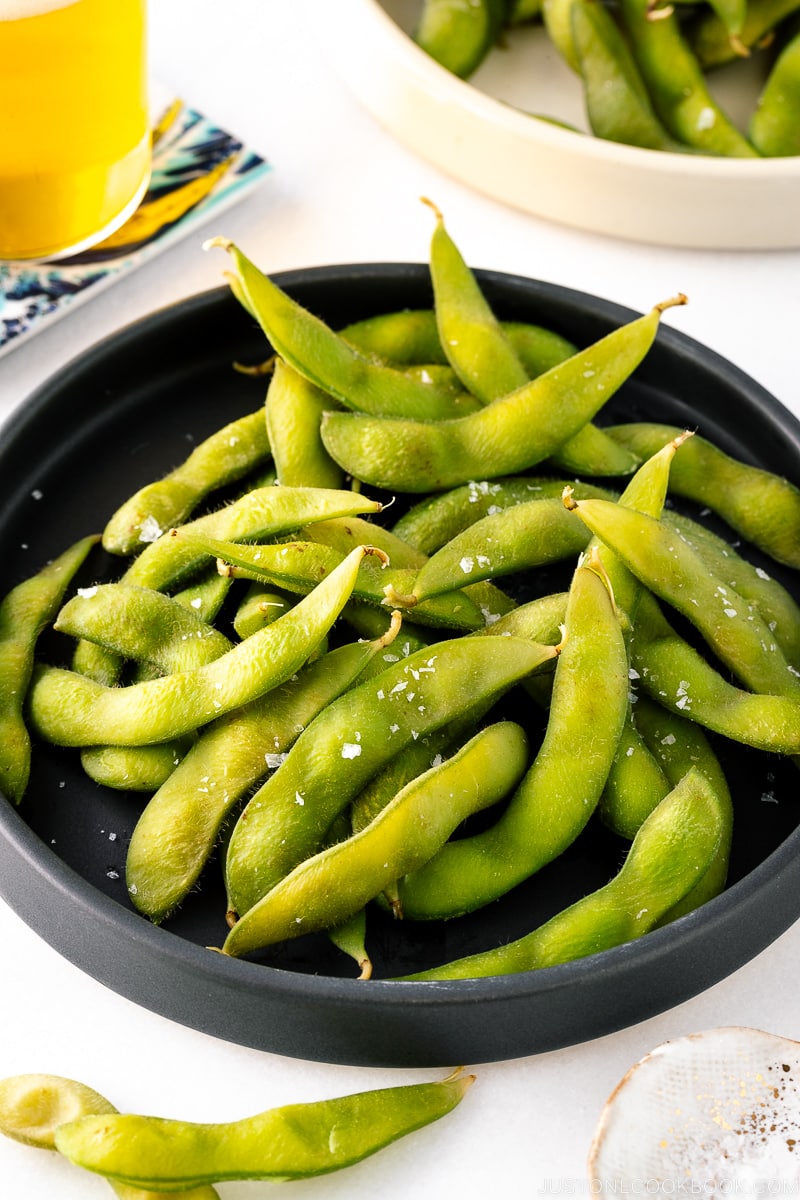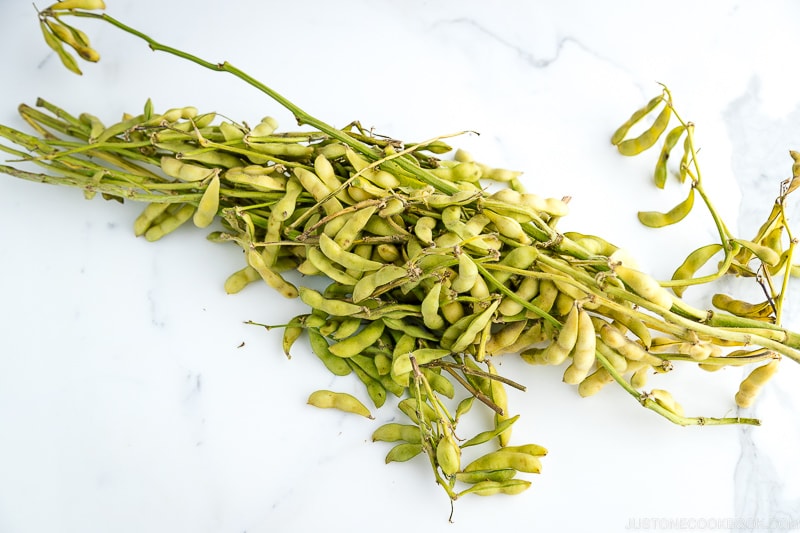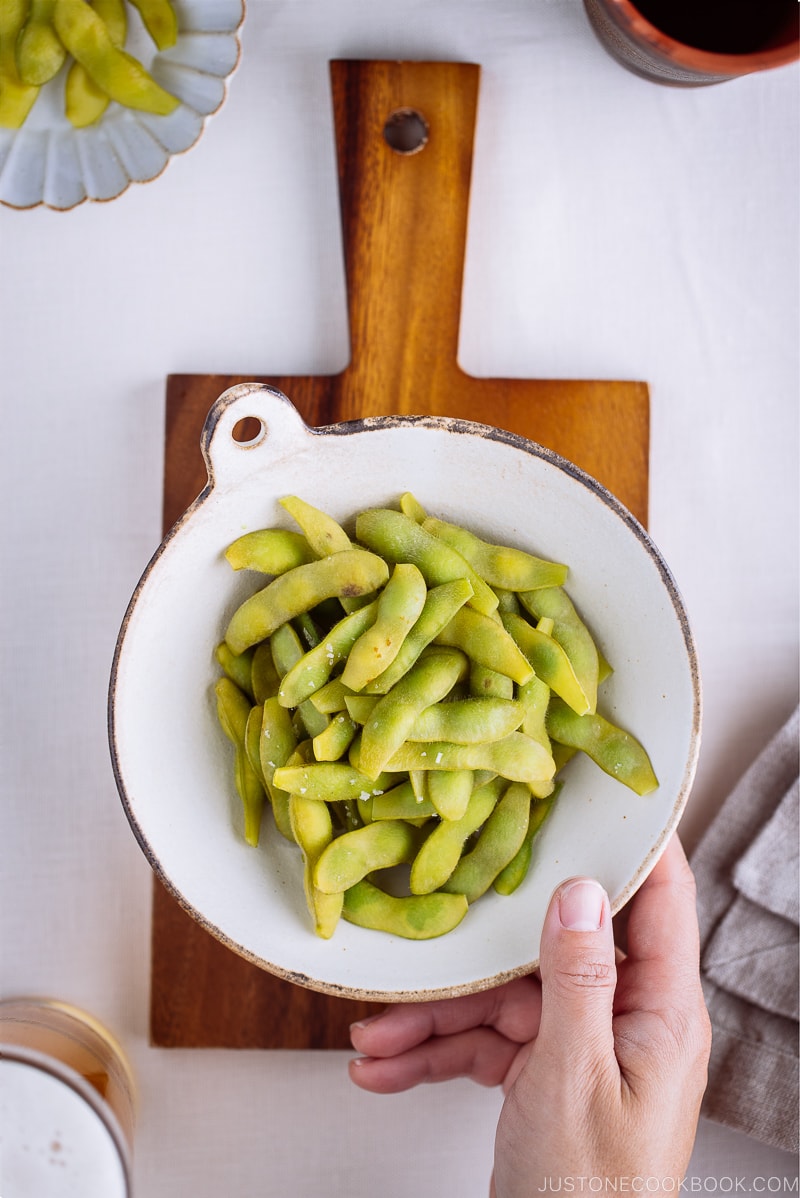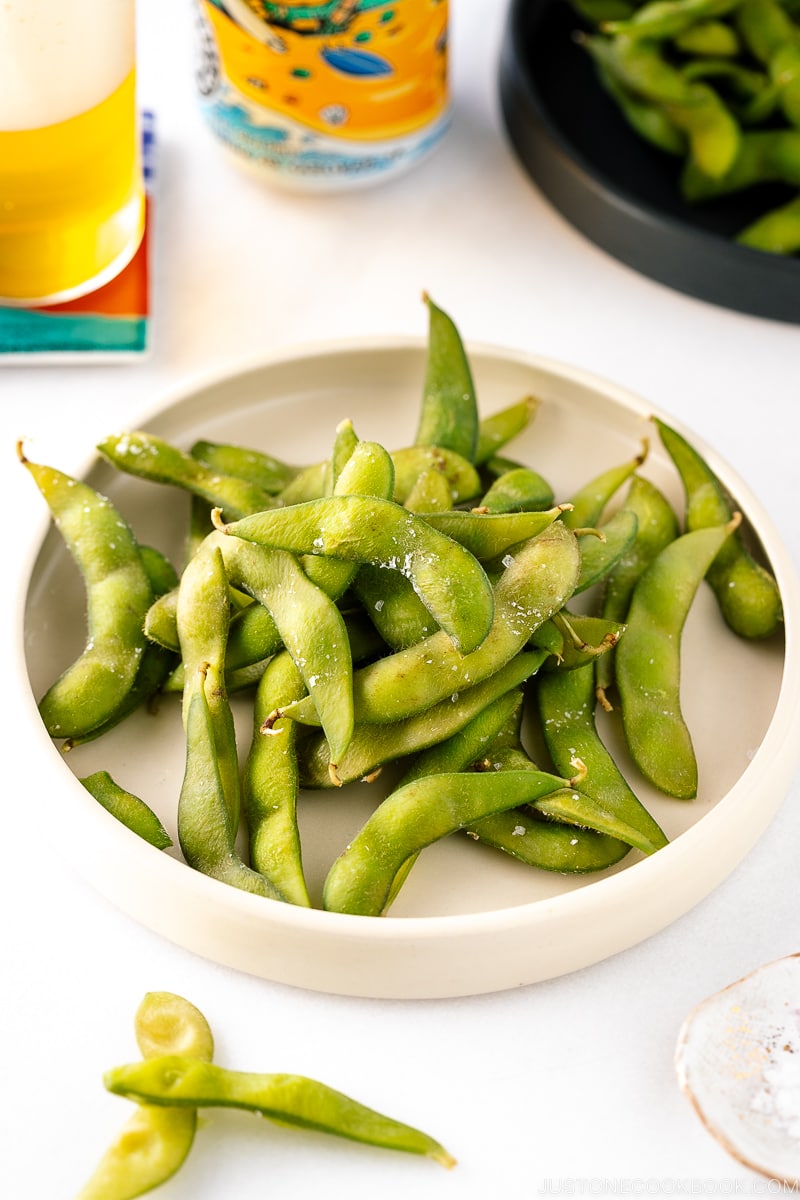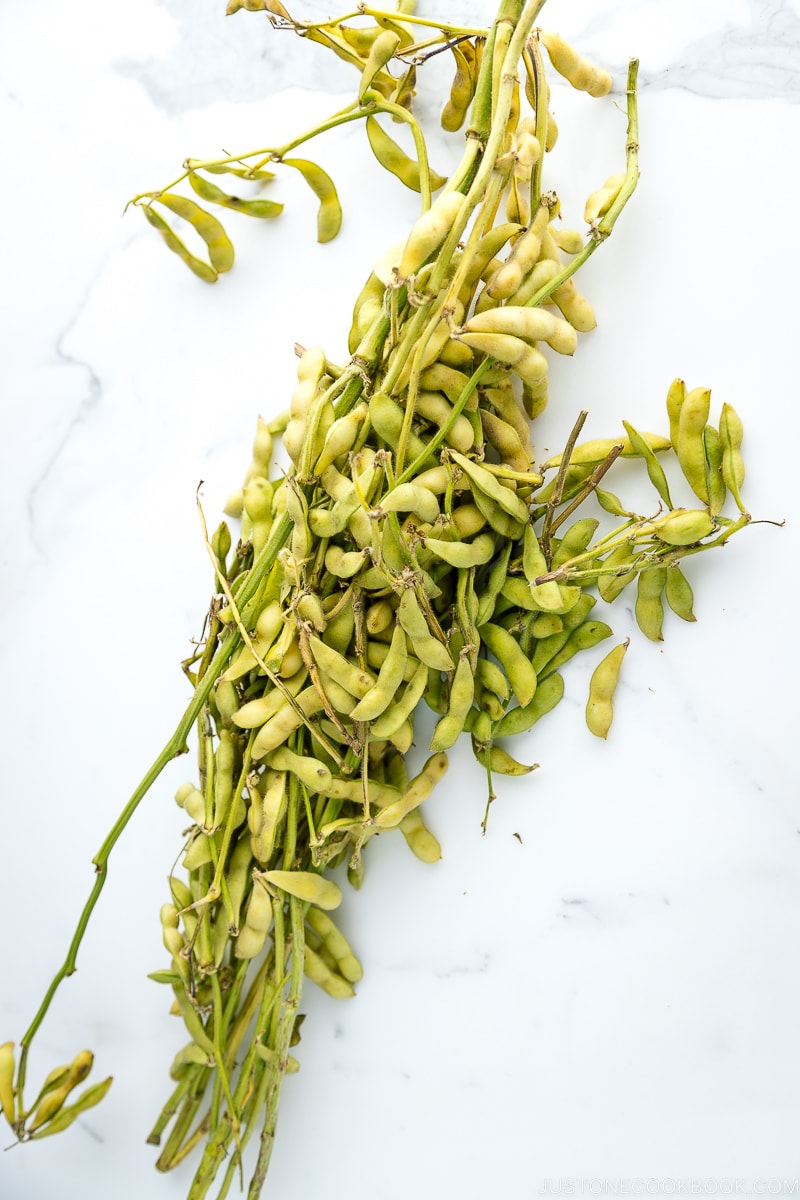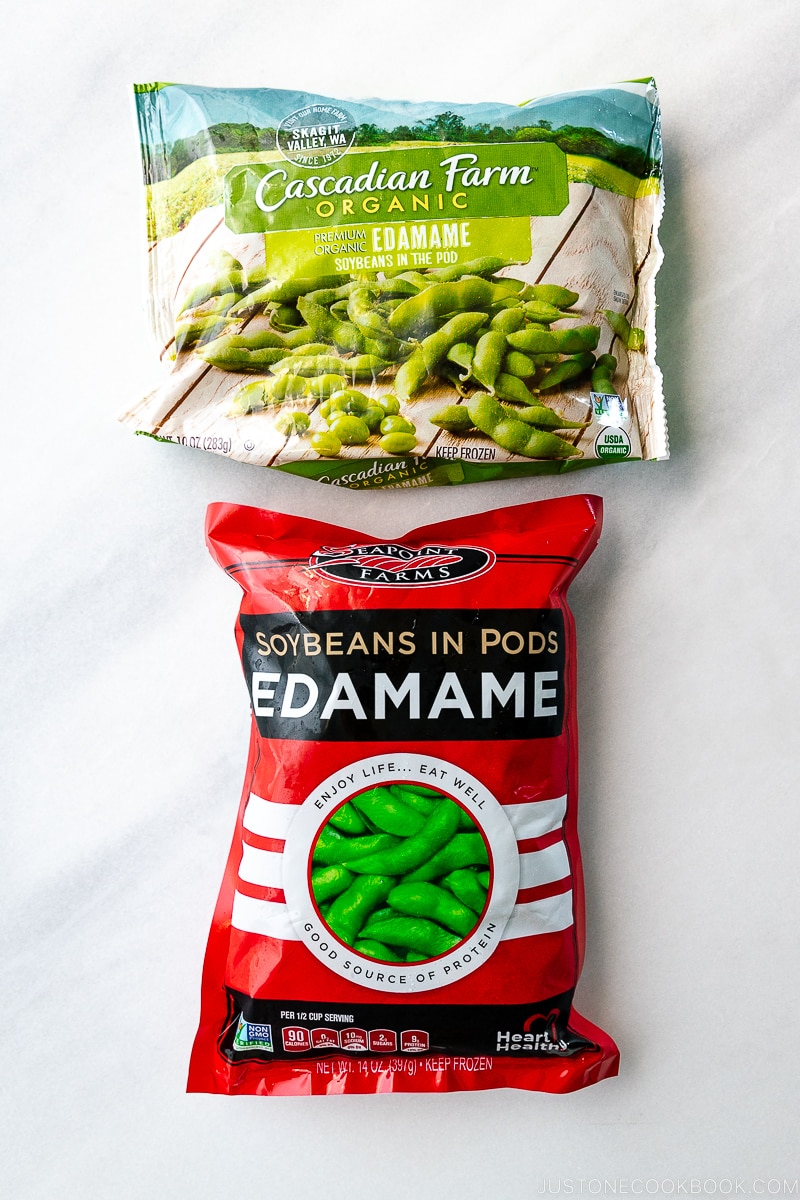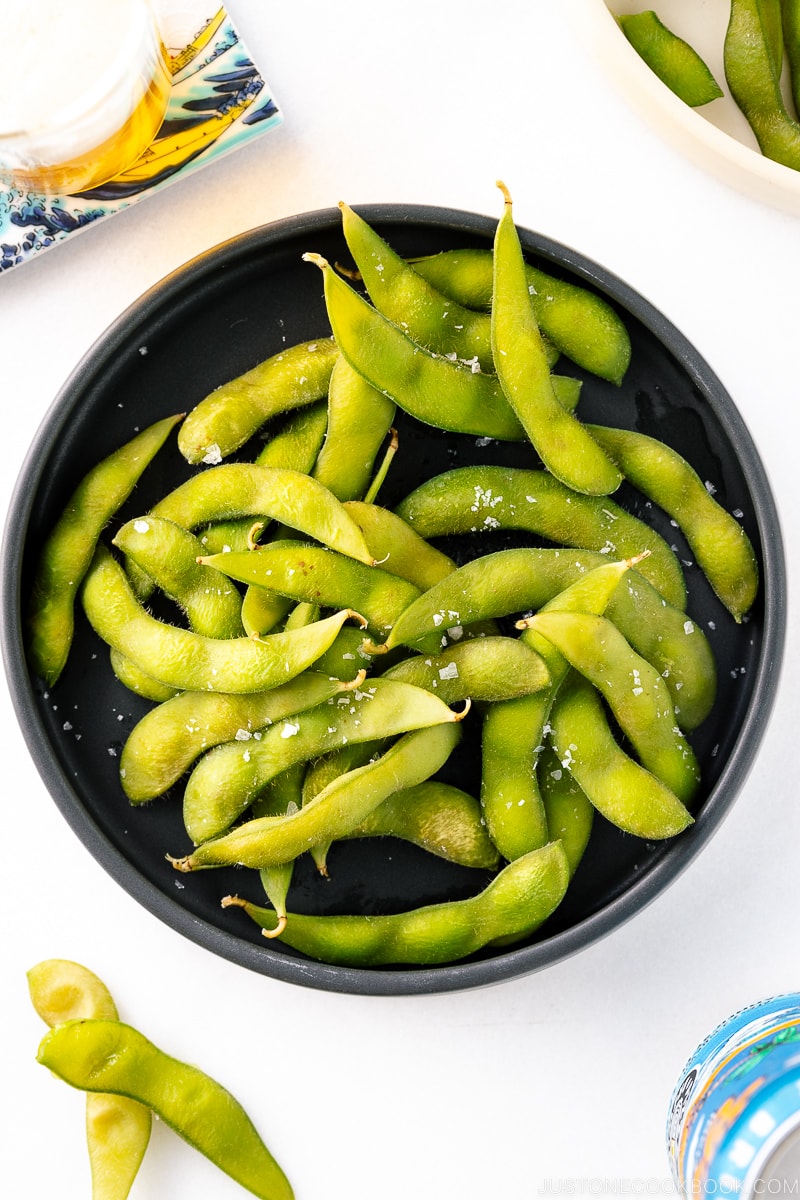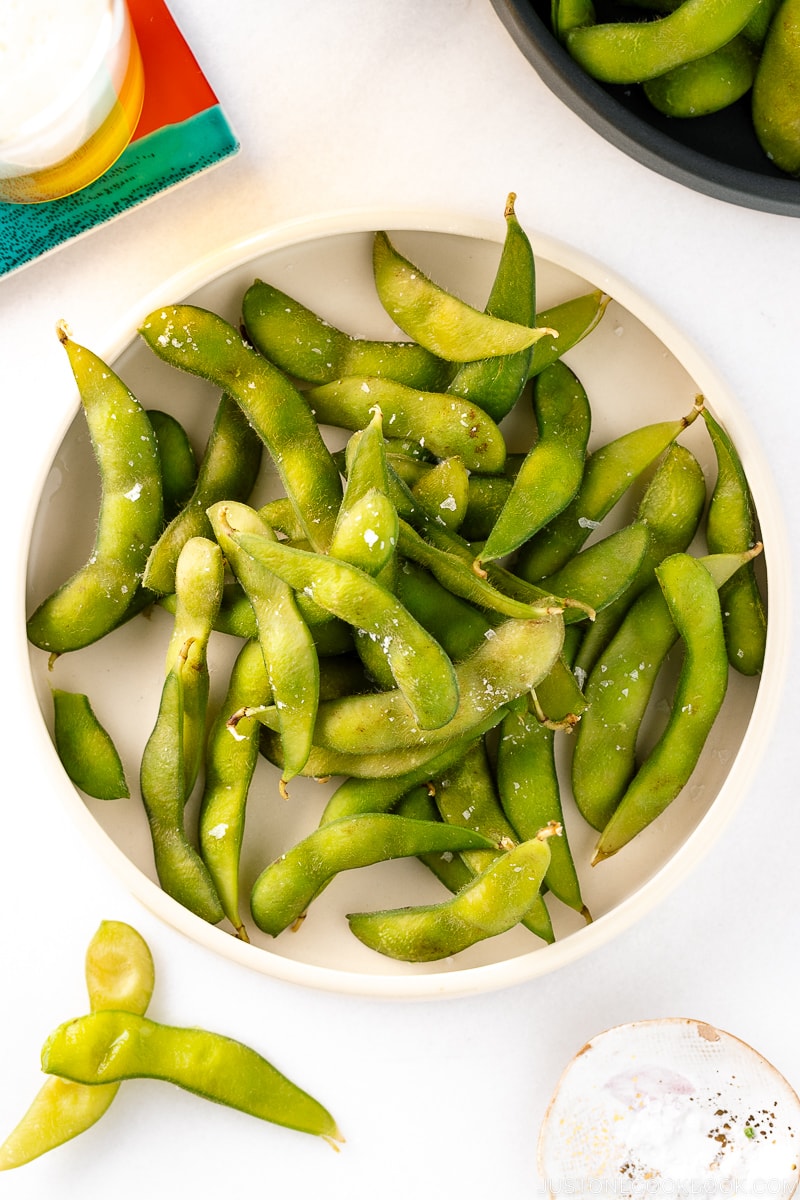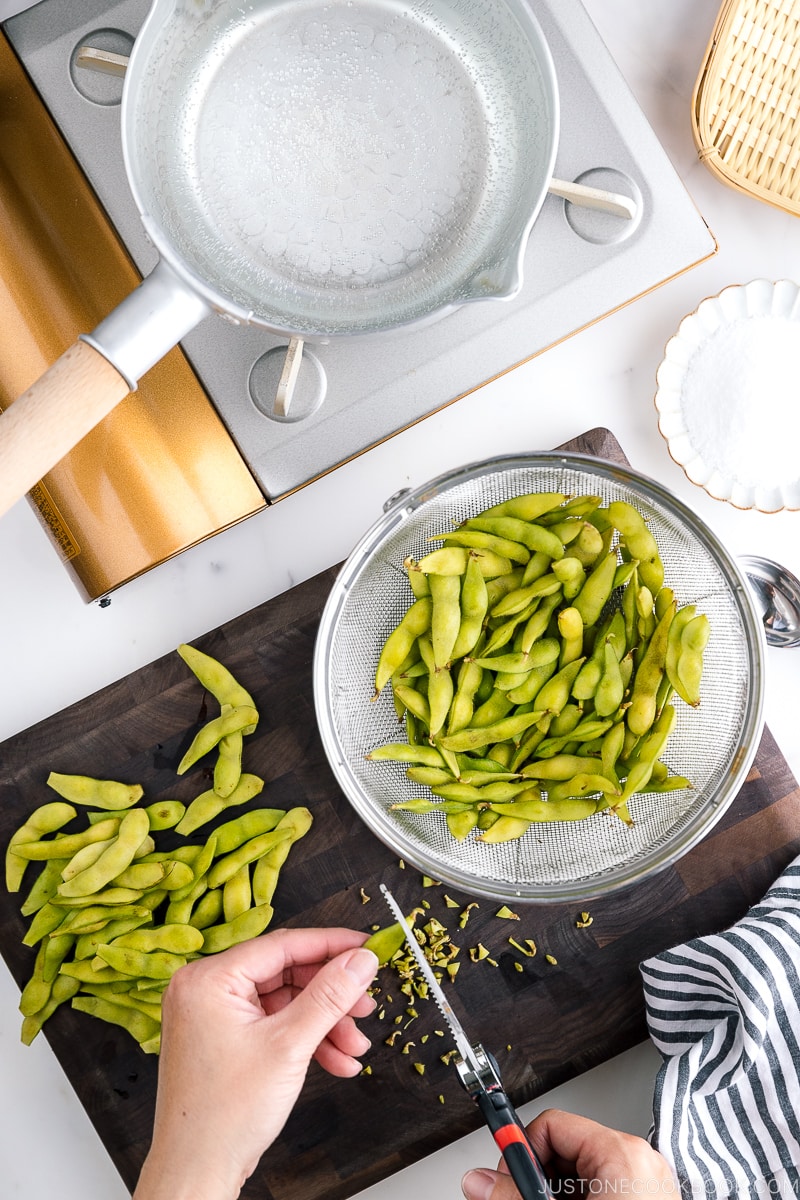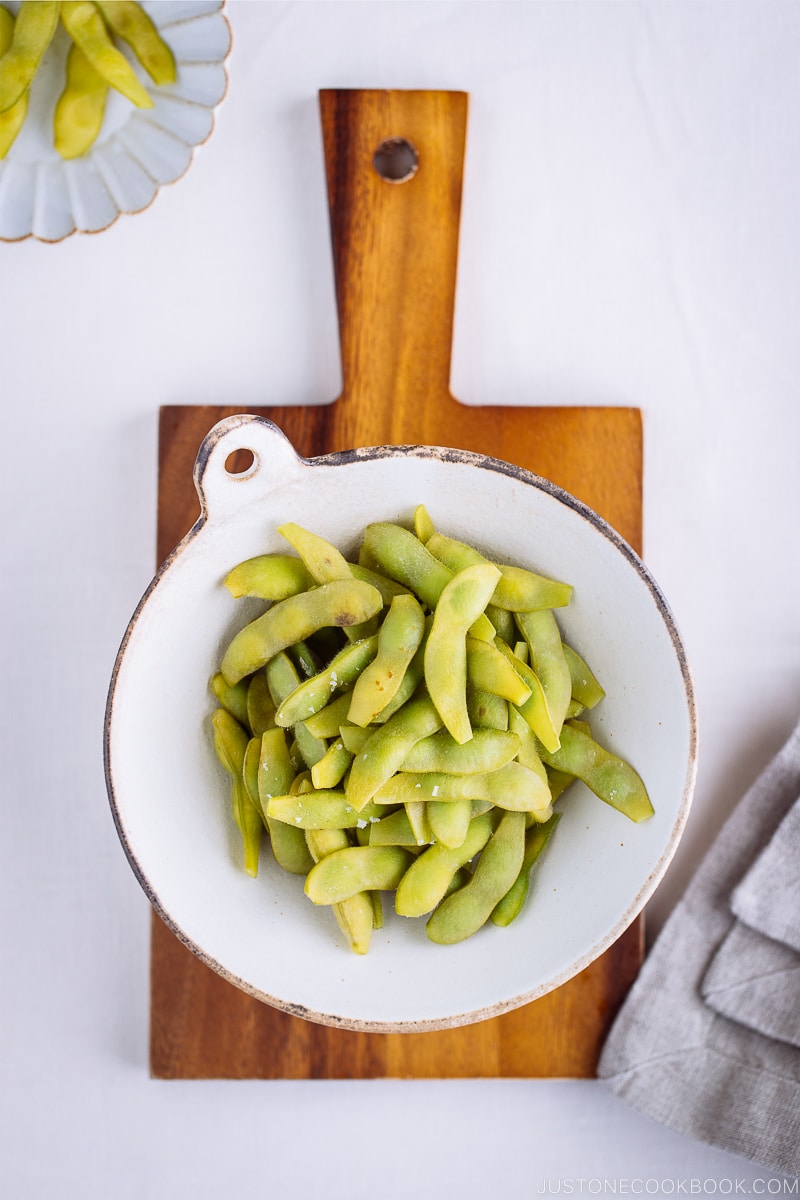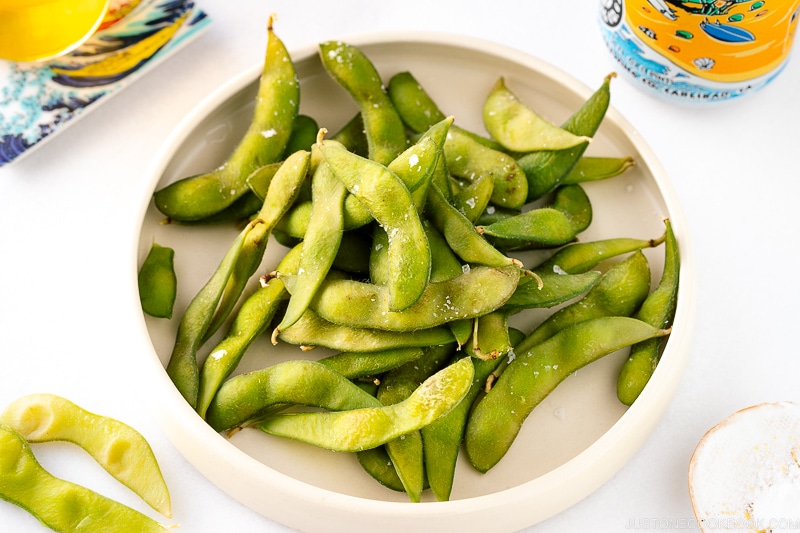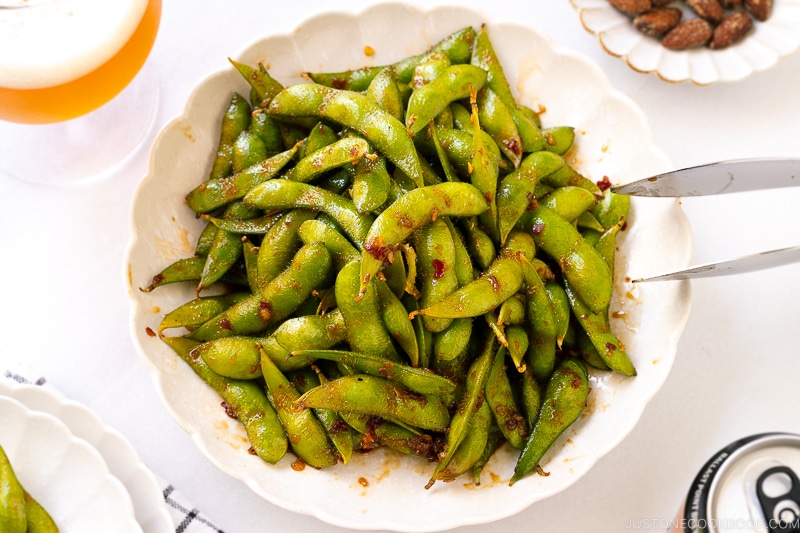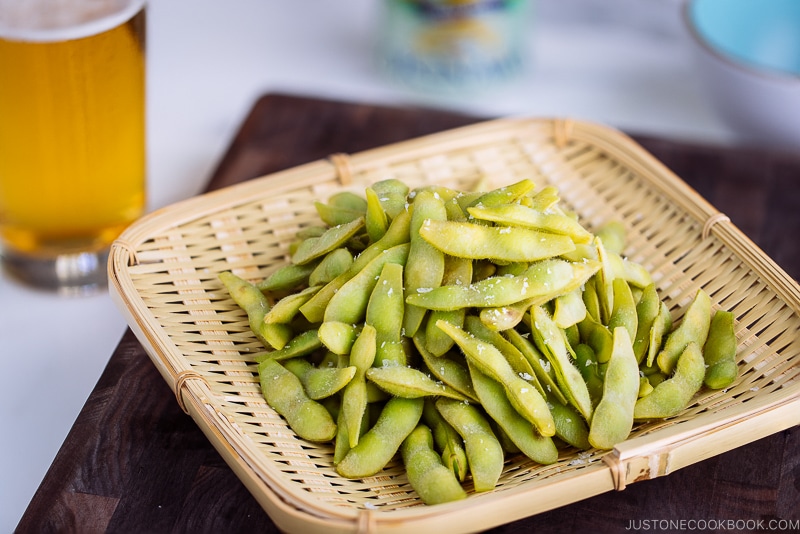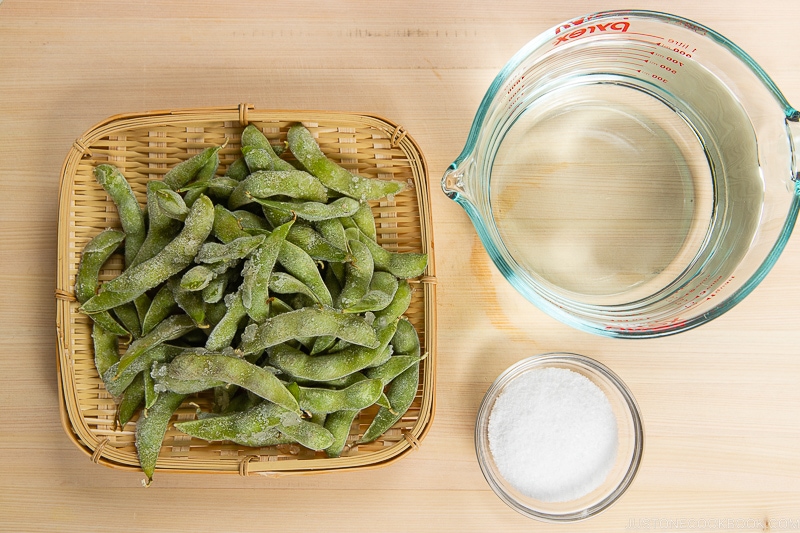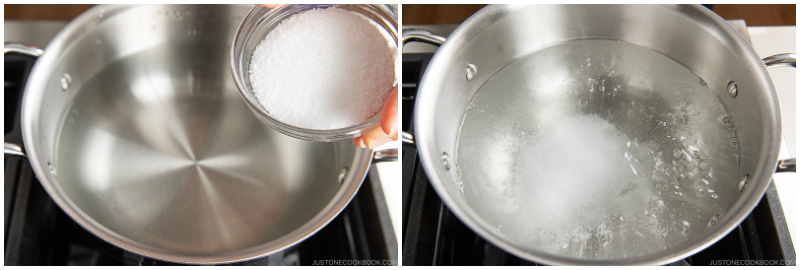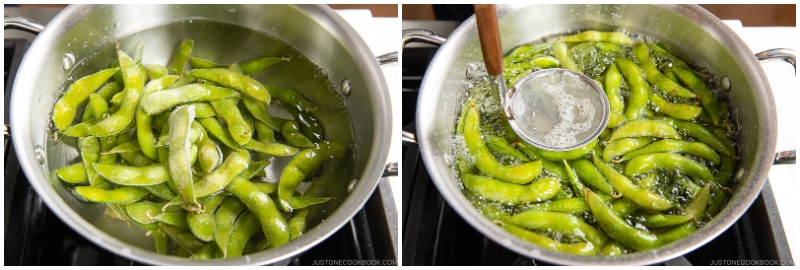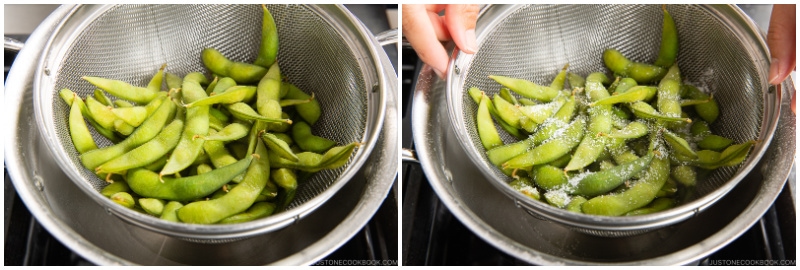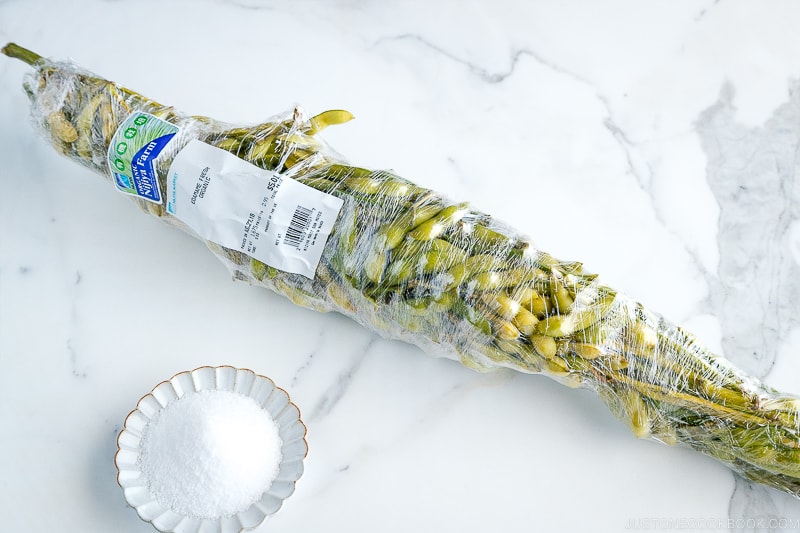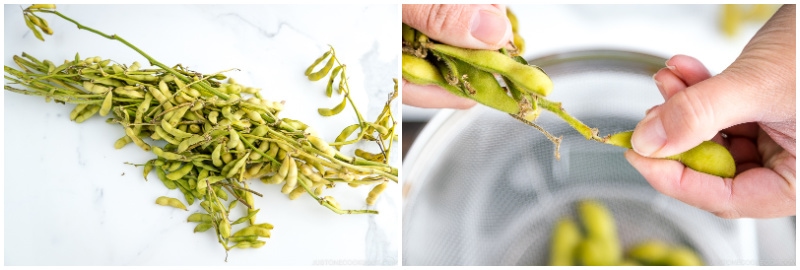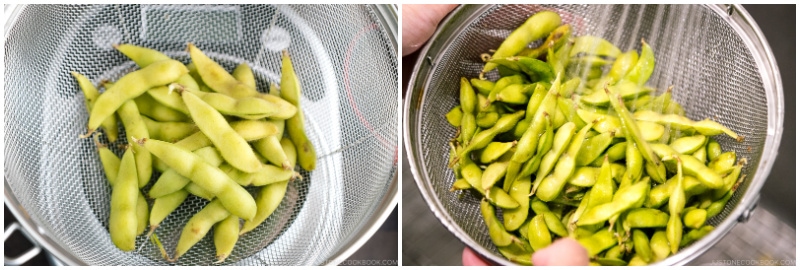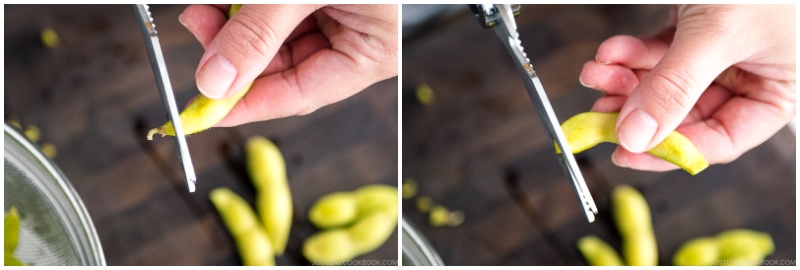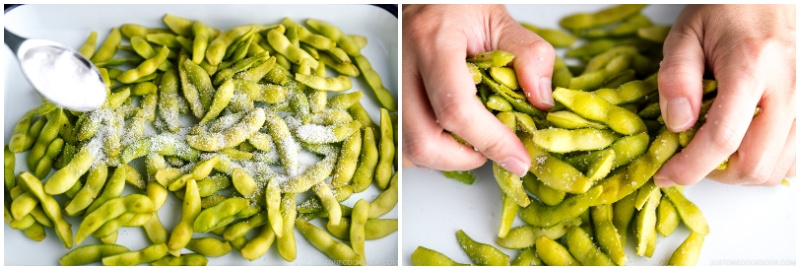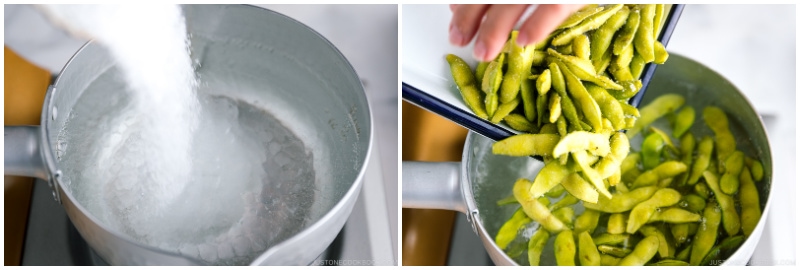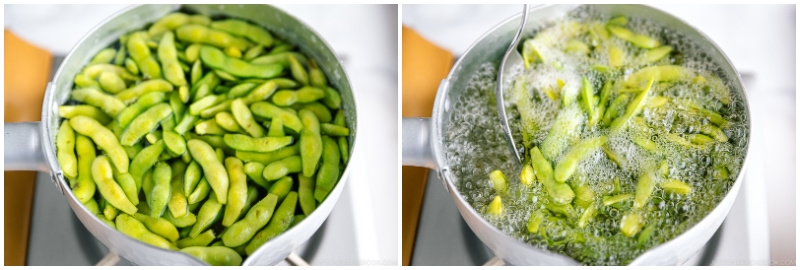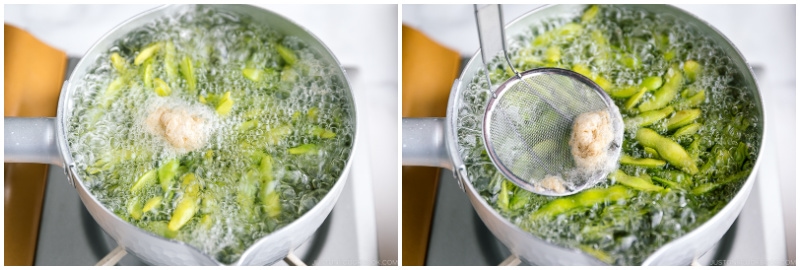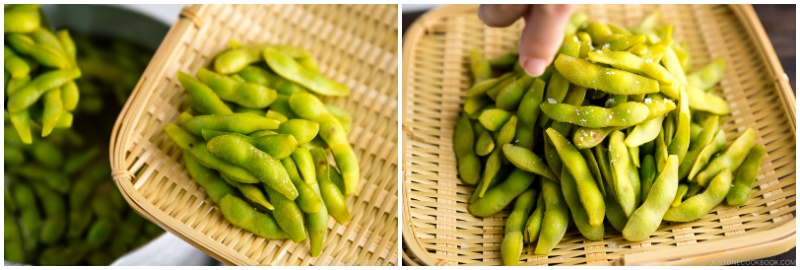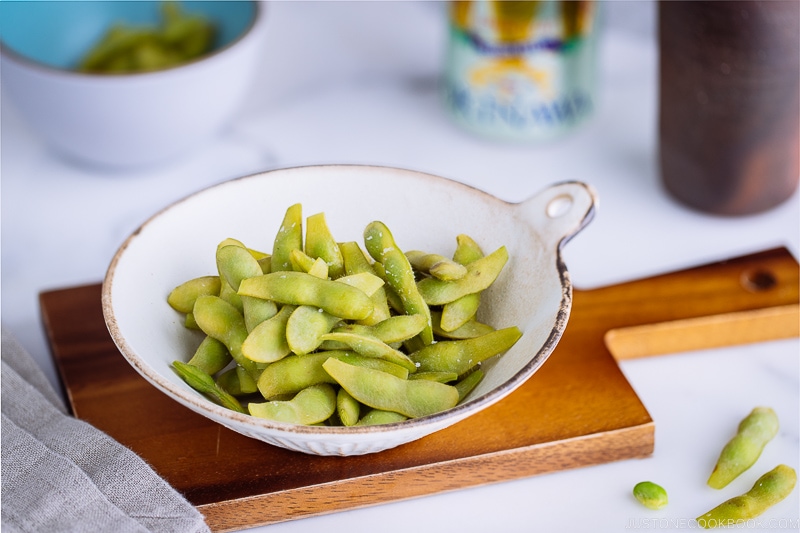Edamame (枝豆) are most popularly known as the little snack or appetizer that is brought to you when you sit down at a table at a Japanese restaurant. With a sweet buttery taste, these lightly boiled or steamed soybeans are not only delicious, but they’re also fun to munch on while waiting for the rice bowl or ramen or sushi platter to be served. In this recipe, I’ll show you the easy Japanese method of how to cook edamame, both frozen and fresh, at home.
What is Edamame?
Edamame are edible soybeans that are harvested and picked when they are young and green. If you’re wondering, they are the same soybeans as the matured soybeans used to make tofu, soy milk, natto, and soy sauce. They are full of plant-based protein perfect for vegetarian or vegan diets! In Japanese, the name edamame literally means ‘stem beans (枝豆)’ as they are often sold while still encased in pods with the stems attached. Long been consumed in Japan since ancient times, edamame is now considered a mainstream ingredient in the US. The most common way to enjoy and eat edamame is by boiling them in pods in salted water and enjoy as a snack or appetizer. We also enjoy the shelled edamame beans as an easy side or pair them with a great variety of dishes.
How to Pronounce Edamame?
It is pronounced eh-DAH-ma-meh in Japanese although many English speakers pronounce the name more like ay-duh-MAH-may.
Health Benefits of Edamame
Low in calories and high in fiber, edamame have always been considered a superfood in Japan that delivers many nutritional value. Just 1/2 cup of these soybeans a day punches up the vitamin and mineral content of the diet needed by our bodies! There are plenty of reasons to include edamame in your diet, and here are just some of the top benefits:
High in Dietary Protein: As the only plant-based source of complete protein, edamame provides all 9 essential amino acids needed for the body, which may help reduce insulin resistance and prevent hypertension. A great protein choice for those who follow a vegetarian or plant-based diet! They also keep you full and satisfied, so it makes a great healthy snack for weight loss. High in Calcium: The calcium in the soybeans may help to increase bone mineral density, regulate blood sugar and lessen symptoms of premenstrual syndrome (PMS) among women. Rich in Vitamins, Magnesium, and Minerals: Edamame is also rich in several vitamins and minerals, especially vitamin K and folate. Adequate folate intake is particularly important for pregnant women and young children as it is responsible for red blood cells and brain health. The plant compounds are essential to lower cholesterol. High in Iron: For plant food, edamame provides an excellent source of iron. Sufficient iron is essential to transport oxygen throughout the body, ensuring the energy level of our bodies. It is also necessary to maintain the health of our skin, hair, and nails. Rich in Phytonutrients: A rich source of phytonutrients like isoflavones, saponins, phytosterols, and carotenoids, edamame provide antioxidants and anti-inflammatory that help lower the risk of cancer.
Where Can You Buy Edamame
Edamame are as common as peas where you can find them being sold in plastic bags in the freezer aisle at most grocery stores. You can buy edamame four ways:
Fresh edamame pods; Frozen edamame pods; Frozen shelled edamame; and Precooked shelled edamame.
The fresh edamame pods are in season between June to September, so you can hunt for them in your local Japanese grocery stores or farmers markets! Look for fresh pods with stems attached and they should look bright, plump, and slightly fuzzy. For this classic Japanese edamame recipe, we’re looking for edamame pods! If you can’t find fresh pods, you can use frozen unshelled edamame by following my recipe tips below.
3 Mistakes on the Frozen Edamame Package You Should Not Follow
Frozen edamame pods are probably the most easily accessible to everyone. The packages come with instructions at the back, but please take note on these three things:
Let’s Talk about 4% Salt
In Japan, the rule of thumb is to boil edamame in 4% salt water. For comparison, saltwater is 3.5%. If you use Diamond Crystal kosher salt, you need to add 4 Tbsp (40 g) of salt to 1 QT (1 Liter) of water. You may ask why so much salt. When I first learned it, I had the same thought, too! I learned that edamame pods are very thick (true!) and the soybeans won’t be able to absorb the flavor fully unless you use the right amount of salt. I’ve tried different % for fun, and if you follow the edamame package instructions, the soybeans would taste rather bland. That’s not how we enjoy edamame in Japan! Trust me, I’ve been cooking my edamame with 4% salt and they are literally the perfect amount and your edamame will never come out salty. Since the salt in the cooking water is for seasoning soybeans (inside the pods), it’s really up to you how much flavor you want for your edamame. If you have tried the edamame pods in Japan and wish to replicate that flavor, then definitely use 4% salt. It is not required to sprinkle salt after cooking in saltwater. However, you can sprinkle a tiny bit, if desired. White speckles of salt look appetizing (the classic look!) and when you bite into the pods, that salty mouthfeel will make you crave for more.
How to Cook Frozen Edamame Pods
How to Cook Fresh Edamame Pods
How to Serve and Eat Edamame
If you’re in Japan, you’ll most likely enjoy these fun snacks with some foamy cold beer. At home, you can serve edamame as a snack or appetizer in a serving bowl. I usually prepare another empty bowl for the discarded shells. To eat, gently squeeze the soybeans out of the pods into your mouth, and discard the pod in a separate bowl.
Different Ways to Serve Edamame
The fresh pods of edamame are as great as a standalone snack, but you can also enjoy different variations. If you like the heat, make Spicy Edamame with various types of chili paste and hot sauce, like Sriracha and sambal oelek. You can also enjoy shelled edamame beans in a variety of dishes. Try it in your salads, soba noodles, fried rice, miso soup, or rice bowls!
Japanese Fried Rice Vegan Poke Bowl Hijiki Seaweed Salad Soba Noodle Soup
Wish to learn more about Japanese cooking? Sign up for our free newsletter to receive cooking tips & recipe updates! And stay in touch with me on Facebook, Pinterest, YouTube, and Instagram. Editor’s Note: This post was originally published on September 13, 2018. New content and images were added to the post on July 27, 2022.

